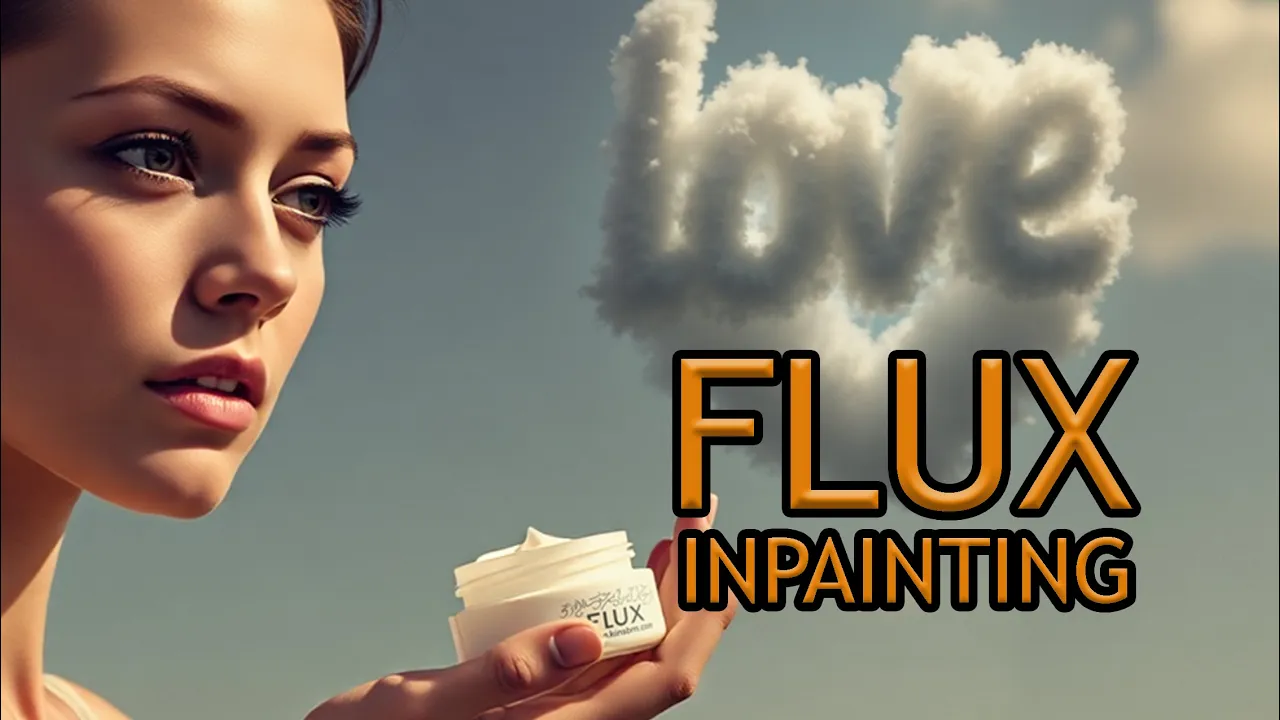FLUX INPAINTING IMAGE TO IMAGE COMFYUI WORKFLOW
People & Blogs

Introduction
In this article, we will explore a workflow for inpainting tailored to the FLUX Development model. This process allows for precise modifications to very small sections of an image while ensuring high quality and seamless integration with the original piece. This workflow is akin to previous methodologies uploaded but has been refined for compatibility with SDXL, highlighting two significant distinctions:
- The inpainting features of SDXL enable integration with ControlNet, enhancing the model's understanding of environmental context and perspective.
- Conversely, FLUX's inpainting capability facilitates text manipulation, an advantage over SDXL.
For a hands-on experience, you can find relevant links, including one to SDXL and its inpainting functionality, in the video description.
Overview of the Workflow
We begin by utilizing the FLUX Development model, the CLIP model, and the VAE (Variational Autoencoder). It's essential to note that the commercial use of this model is limited.
Steps in the Workflow
Load Image: Start by loading the desired image for inpainting. In this interface, you can use the right mouse button to draw the area you wish to alter. A negative mask can be employed to enhance visibility.
Mask Creation: You can manipulate extremely small areas, such as a label, and still achieve remarkable accuracy and quality.
Cropping: This stage involves cropping the mask from the original image. After adjusting the size, the modified image and the mask are sent for further processing.
Mask Padding: Defining padding, which is the distance between the mask and the image's edges, is crucial. The padding should be customized based on the mask's size relative to the image dimensions.
Mask Blur: A critical parameter is the mask blur, which helps in smoothing the edges of the mask. Setting blur to a high value (e.g., 200) can assist the diffusion process in understanding surrounding pixels better, ensuring a more harmonious outcome.
Prompt Setup: The prompt does not need to be overly complex. The core prompt might look like this: "photo of the word flux on a white jar, high quality." Enhancements through text manipulation allow for easier context implementation.
Model Processing: After establishing the prompt and necessary parameters, the model runs through differential diffusion, supporting the overall understanding of the new object in its original context.
Final Output: The output image will then be resized and combined back into the original image format. You will have the option to choose which mask version to utilize for the final output.
Mask Refinement: If the initial output is unsatisfactory, options for refining the mask allow for precise adjustments through manual segmentation.
Conclusion
This workflow provides a structured method for inpainting with the FLUX model, optimizing for text inclusion and context comprehension. Future updates and tools will likely enhance this workflow, so staying informed will be beneficial.
Keywords
- FLUX Inpainting
- SDXL
- ControlNet
- Mask Creation
- Mask Padding
- Mask Blur
- Image Processing
- Contextual Prompts
- Differential Diffusion
FAQ
Q: What is FLUX inpainting?
A: FLUX inpainting is a method used to modify small sections of an image while maintaining high quality and integrating changes with the original image.
Q: How is the FLUX workflow different from the SDXL workflow?
A: The FLUX workflow allows for textual modifications and context understanding without the constraints of ControlNet, which is primarily featured in the SDXL workflow.
Q: Why is mask blur important in the inpainting process?
A: Mask blur helps smooth out the edges of the selected areas, allowing for a better blend with surrounding pixels, which enhances the overall integration of the modification.
Q: Can I refine the mask after the initial processing?
A: Yes, FLUX allows for manual refinement of the mask, providing flexibility to adjust the output based on preferred modifications.
Q: Are there commercial use limitations with the FLUX model?
A: Yes, the FLUX model has certain restrictions regarding commercial use, so it's essential to be mindful of these limitations while utilizing the workflow.

